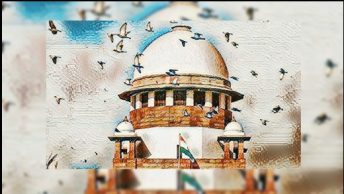to have encountered less racism than elsewhere. Indians were denied membership at elite social clubs like the Byculla Club or Yacht Club in Bombay, and Indians were often denied a first class seat or a seat at a dining table on a train or ship in the colonial period. By contrast, race did not predict how judges decided cases – Indian judges like Davar and Chandavarkar decided cases against Indian political leaders like Tilak and Savarkar, while a British Chief Justice, Lawrence Jenkins, almost single-handedly helped Indian lawyers to excel at the Bar. To this day, Lawrence Jenkins occupies pride of place at the Bombay High Court – his portrait hangs alongside Chagla’s in the Chief Justice’s courtroom, and his statue stands beside Mulla’s at the judges’ entrance of the court. A Welsh Chief Justice, Jenkins was so hated by his British brethren that he was called a “scoundrel” in open court by a British judge in Madras- a judge who was consequently forced to resign. It was seniority, not race, that determined which of the two judges on a “Division Bench” got to write the judgment in a case. At the higher levels of the profession, litigants hired lawyers based on how good they were in court. Like Sir Jamshedji Kanga or J.D. Inverarity, if you were capable of making an outstanding argument in court, it mattered little to the litigant whether you were Indian or Briton, Hindu or Muslim. The Indian and British judges of the court shared warm personal relations off the bench. Gentlemen judges like Badruddin Tyabji and M.C. Chagla- products of education in England – shared close bonds with their British counterparts. A very tiny proportion of cases before the court (in fact, less than 1% of the court’s docket) involved white litigants – thus, there were scarce opportunities for the court to act in a racist manner in favor of white litigants.
to have encountered less racism than elsewhere. Indians were denied membership at elite social clubs like the Byculla Club or Yacht Club in Bombay, and Indians were often denied a first class seat or a seat at a dining table on a train or ship in the colonial period. By contrast, race did not predict how judges decided cases – Indian judges like Davar and Chandavarkar decided cases against Indian political leaders like Tilak and Savarkar, while a British Chief Justice, Lawrence Jenkins, almost single-handedly helped Indian lawyers to excel at the Bar. To this day, Lawrence Jenkins occupies pride of place at the Bombay High Court – his portrait hangs alongside Chagla’s in the Chief Justice’s courtroom, and his statue stands beside Mulla’s at the judges’ entrance of the court. A Welsh Chief Justice, Jenkins was so hated by his British brethren that he was called a “scoundrel” in open court by a British judge in Madras- a judge who was consequently forced to resign. It was seniority, not race, that determined which of the two judges on a “Division Bench” got to write the judgment in a case. At the higher levels of the profession, litigants hired lawyers based on how good they were in court. Like Sir Jamshedji Kanga or J.D. Inverarity, if you were capable of making an outstanding argument in court, it mattered little to the litigant whether you were Indian or Briton, Hindu or Muslim. The Indian and British judges of the court shared warm personal relations off the bench. Gentlemen judges like Badruddin Tyabji and M.C. Chagla- products of education in England – shared close bonds with their British counterparts. A very tiny proportion of cases before the court (in fact, less than 1% of the court’s docket) involved white litigants – thus, there were scarce opportunities for the court to act in a racist manner in favor of white litigants.






Congratulations Abhinav. Look forward to reading the book!
Many thanks Nick!
It’s really very nice and useful post.Thanks for sharing this with us!it’s my first visit. civil litigation solicitors burnley
http://bit.ly/1FZ2NS7